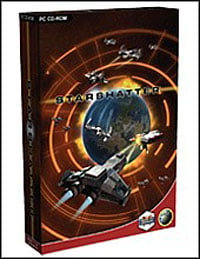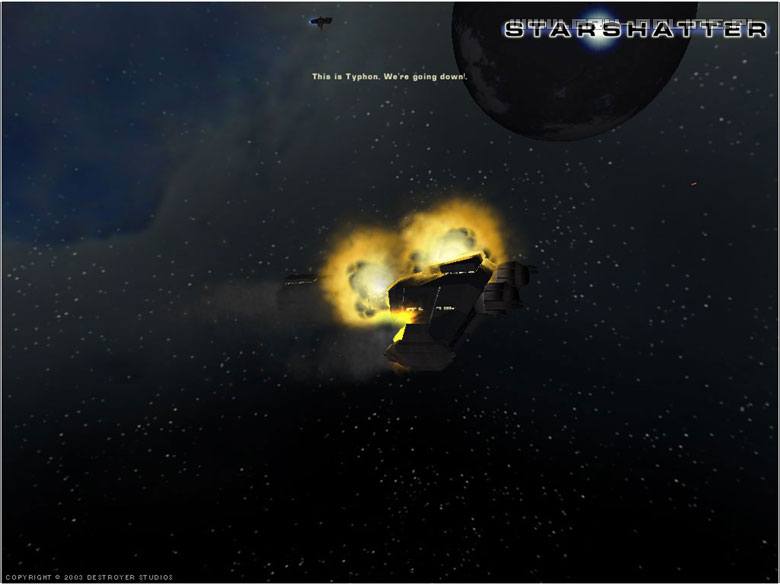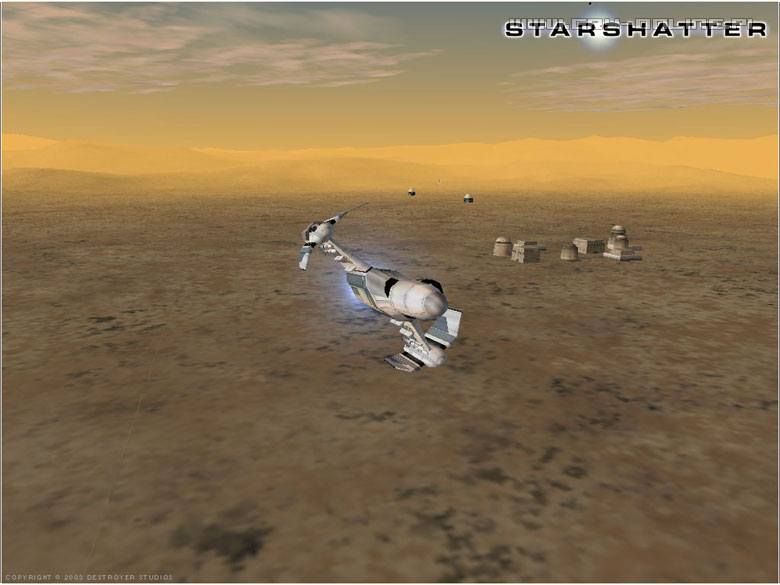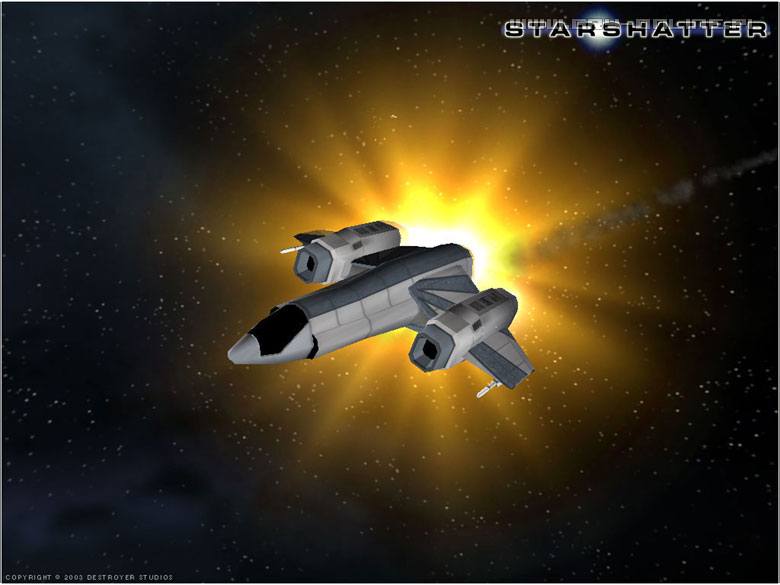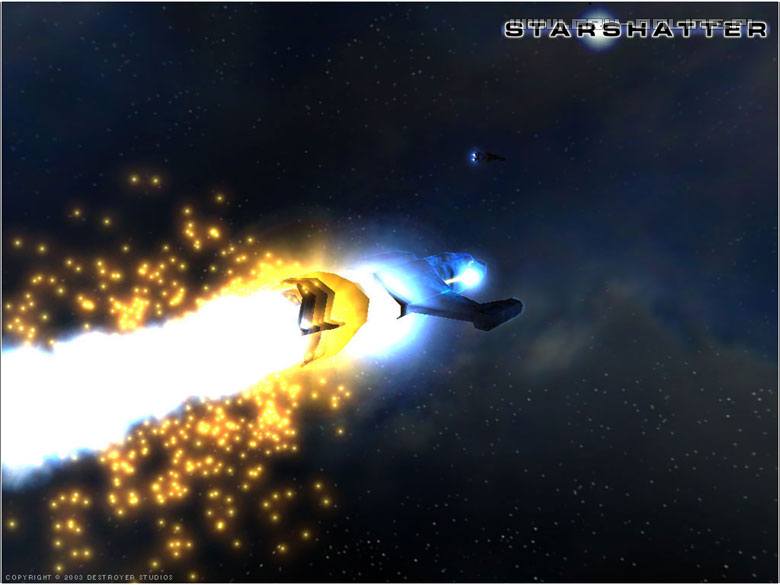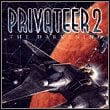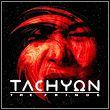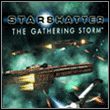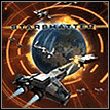Starshatter takes the concept of the mission-based space simulation to a new level. Rather than deliver twenty-five heavily scripted missions that play the same way every time, Starshatter will use a dynamic campaign engine to custom build an unlimited number of unique missions based on the current state of the war, and the type of ship you are commanding:
The enemies you will face in Starshatter's dynamic campaign won't just be targets. Enemy ships and fleet admirals use the same AI algorithms as your own wingmates and commanders. They are trying to win the war just as much as you are. This means that with every kill you make, you are directly contributing to the war effort.
Starshatter supports mouse, keyboard, joystick, throttle, and gamepad flight controls simultaneously, so that you can find the control method that works best for you. You can easily assign any joystick or gamepad axis to any function you wish, and each axis (including the mouse Y-axis) can be inverted to suit your preferences.
In the arcade flight model, the joystick is configured as in a typical space combat simulation, with the stick controlling pitch and yaw and the twist axis controlling roll. In the standard flight model, the joystick is configured as in a high-end airplane simulation. The stick controls pitch and roll, while the rudder pedals or twist axis controls yaw. At any time, in any flight model, you can swap the roll and yaw inputs by pressing the J key.
Under normal circumstances, the mouse is used to control the user interface and to manipulate the interactive HUD. When using the third-person exterior view, the mouse is also used to control the camera and to select targets and issue orders to allies, just as in a space-based RTS game. You can right-click on any friendly unit in the chain of command to access a context-sensitive orders menu.You can also use the mouse to fly your ship and fire your weapons. By pressing the ~ key, you toggle the mouse between selection mode and flight mode. In flight mode, the mouse works much like the mouselook control in an FPS game. You steer the ship by moving the mouse in the direction you want to go. Fire guns with the left button and missiles with the right button. Tap the middle button to select a target, and use the mouse wheel to control your speed.If you prefer, you can also configure the mouse to work as a virtual joystick. In this mode, the distance of the mouse cursor from the center of the screen controls how fast your ship will turn, instead of how far it will turn. Some people may prefer the virtual joystick mode for dogfighting because it requires less repositioning of the mouse than the mouselook mode.
Flight Model
Starshatter includes three different flight models so that you can enjoy the space combat experience in the way that is most effective for you.
By default, Starshatter is configured for the standard Newtonian flight model. In this flight model, all ships have both linear and angular momentum or inertia. There is no drag in space, so if you cut your engines to zero you will keep going at your current speed indefinitely. Your onboard flight computer will tryto keep your velocity pointed in the same direction as your nose, but you can turn off this behavior by pressing M for manual mode. In manual space flight mode, you can fly sideways or backwards to your heart's content.
In the standard flight model, airborne combat is quite similar to what you will find in a good jet combat simulation. Your fighter will fly just like an airplane, with lift, drag, gravity, angle of attack, and atmospheric density to contend with. You have very limited rudder authority, and you have to perform banked turns at corner velocity to stay in the fight.In the arcade flight model, Starshatter is much more like what you may be used to from playing other space combat simulations. Your ship always flies in the direction you are facing, and your throttle setting controls your speed instead of your acceleration. If you cut your throttle to zero, your ship will slow to a stop even in space. You can perform flat turns in atmosphere, and you don't have to worry about drag or stalls. Gravity is still modeled, and you do still have to worry about running out of fuel and slamming into that big hard thing called the ground.Starshatter even includes a relaxed flight model that is between these two extremes. The relaxed model is similar to the standard model except that drag applies even in space. This helps keep your velocity under control, and makes it easier to turn.One way or another, you should have no problem finding a flight model that works for you. Now get out there and start getting us some kills!
Space Combat
Starshatter brings space combat up to date by using a combat model inspired by modern day surface navy and naval-aviation technology, instead of the more common World War II era technology. Each of the different components of the space force has a distinct role to play in battle, and this specialization must guide your strategy in deploying your forces.
Fighters are small, agile, single-seat space craft that are capable of both atmospheric and orbital combat. In Starshatter, fighters play several important roles. Because of their speed and maneuverability, fighters are often used for scouting and recon jobs. They are used as an anti-air defensive platform to shoot down enemy fighters and strike craft that are attacking the fleet. And they are used as strike craft that can project force from orbit down to attacking ground targets.
In order to accomplish these dual missions in different environments, fighters need to give something up. Fighters are too small to support shield generators or artificial gravity systems, and they carry fuel and life support for only limited duration mission profiles.
One solid hit from an anti-air missile is often enough to finish a fighter pilot's career. Fighters use active decoy countermeasures to evade incoming missiles. The fighter's job is to hit the target quickly and decisively and get out in one piece. Fighters are not capable of long range flight between planets or even from a planet to it's closest moons.
Starships are big, bulky, slow, and powerful, and they are the only ships capable of making the faster-than-light quantum leap between the stars. Starships are designed for long range missions, and carry enough power to run graviational deflector shields, artificial gravity systems, and the quantum drive. As a result, they are too big and un-aerodynamic to land on planets. Starships are limited to the cold, hard vacuum of orbit.
* Small Frigates are used for air defense. They can shoot down enemy fighters and torpedoes with rapid fire plasma cannon and interceptor missiles.
* Destroyers are attack platforms that can engage enemy ships one-on-one or in small groups.
* Cruisers are the backbone of the fleet's attack capability. They carry devastating firepower that can effectively engage any size target; even a military battle station.
* Carriers are the cornerstone of the fleet. They deliver fighters and strike ships to the scene of action, and they coordinate the entire battle plan.
